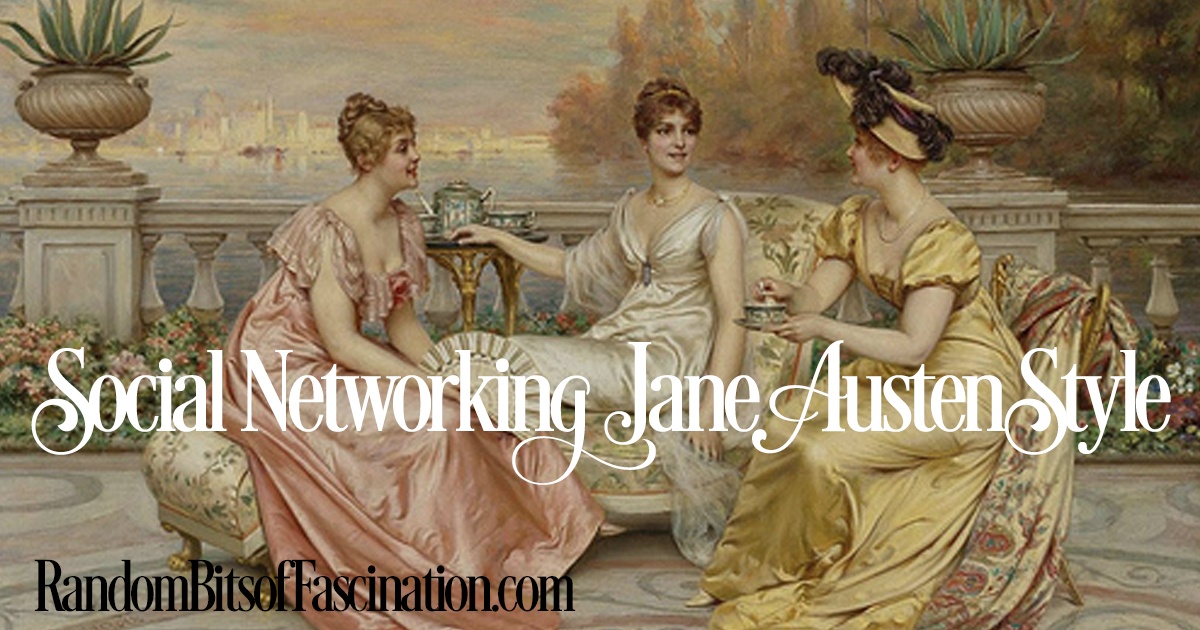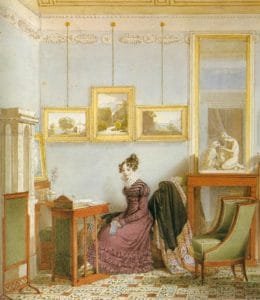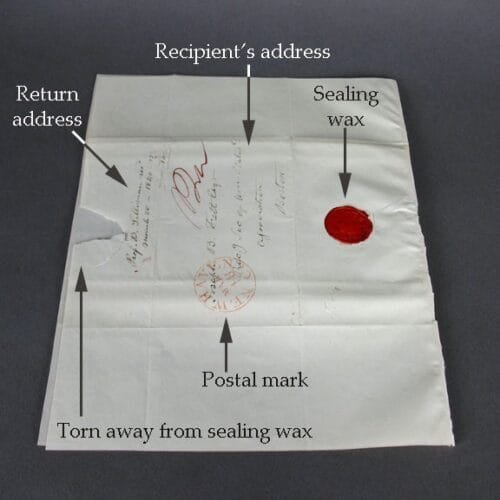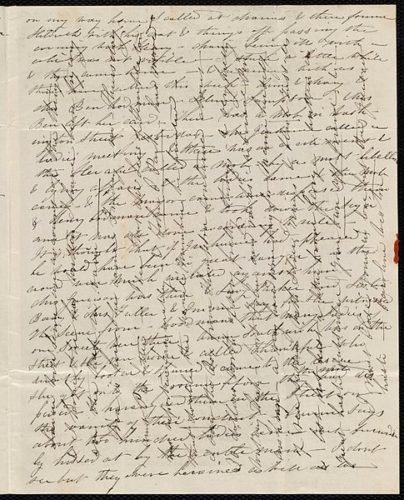The True Art of Letter Writing

With the advent of social media, letters may have found a new life though email and texts. What did letters look like in Austen’s day?
The True Art of Letter writing
By the Regency era, the British postal system (link) had proven itself both efficient and dependable, making letter writing a highly effective means of communication. Ladies and gentlemen spend considerable time writing letters, but ladies were widely regarded as the most desirable of correspondents.
“I should no more lay it down as a general rule that women write better letters than men, than that they sing better duets, or draw better landscapes. In every power, of which taste is the foundation, excellence is pretty fairly divided between the sexes.”
Henry Tilney & Catherine Morland, Northanger Abbey, Jane Austen
Women writing letters

From an early age, letter writing as a significant presence in a woman’s life. At boarding school, writing lessons included penmanship—beautiful handwriting was a valued accomplishment (one at which I would have failed, miserably)—orthography, otherwise known as spelling (another subject at which I falter), and the art of letter writing, including how to open and close their letters with suitable phrases. The later often meant copying such suitable phrases out of a book provided for such use, another assignment I dreaded like no other in school. So far, I’m batting zero for three at being an accomplished woman.
Since letters were frequently shared, like newspaper, among one’s social circle, the emphasis on suitable phrasing and content makes a bit more sense. The ideal style avoided both formality and vulgarity, striking a proper middling tone.
Not all letters were intended for public consumption. Select portions of letters might be read aloud to an audience. Sometimes the correspondent would indicate what could be read aloud by underlining passage. Otherwise, letters were considered very private and kept in locked boxes and drawers to preserve them from prying eyes.
To whom one owed a letter and was owed a letter was so significant that ladies kept careful track of correspondence. Notes in diaries, even more formal lists helped them to keep track of the letters they needed to write. In some ways this feels rather similar to the modern practice of flagging emails to remember to respond to them. The more things change, the more they stay the same, right?
Letters of ceremony
A person who can write a long letter with ease, cannot write ill.
Jane Austen
Since business was the realm of men as a general rule, ladies’ letters took two primary forms, formal letters of ceremony and informal personal letters.

What were letters of ceremony? Much like formal visits, these were letters that were expected on particular occasions. Births, deaths, and weddings were some of the events that could occasion such letters. These letters often had to be written quickly. Information about a death was dispatched as fast as possible to permit people to attend the funeral. Etiquette favored of black wax for the seals on such letters as a forewarning of what was contained within.
Appropriate and elegant composition was expected in letters of ceremony and the return correspondence that followed. But how to ensure just the right tone would be struck? Never fear, books like “The Complete Letter-Writer; or, Polite English Secretary” (London, 1789) were available with a collection of model letters one could copy and modify to suit the occasion.
While today’s etiquette would find a largely plagiarized letter of congratulation or condolence largely insulting and offensive, during the Regency those same letters would be regarded as kind and thoughtful. All a matter of perspective, I suppose.
Correspondence as an extension of conversation
I have now attained the true art of letter-writing, which we are always told, is to express on paper exactly what one would say to the same person by word of mouth.
Jane Austen, letter to Casandra
Austen’s sentiment reflected a common perspective of the day. Informal, personal letters were an extension of the art of conversation (link) and should ideally create the same sort of experience as good conversation.

Even so, there were expected courtesies to be followed. Before one could begin to converse, a commentary on the prior news share, sometimes lengthy, was required. After that, daily news and family information would take priority over topics. Since postage charges doubled on two-sheet letters and went up fourfold on heavier letters, space was at a premium.
Clever techniques were employed to fit more into the single page allotted. Ignoring paragraphing, using initials for names and symbols like ampersands could help maximize the communications on a single page. Once the sheet was full, writers would turn the page 90 degrees (link) and fill it again, written in that direction. Those with even more to say could turn it again to write across diagonally. It must have taken some practice to learn how to read the visual mish-mash that resulted, but if you think about it, I’m pretty sure it isn’t more difficult to decipher than ‘text-speak’ and emojis—some of which I still don’t understand!
Once the important news was shared, letters could turn to more pleasant topics. Since personal letters should make the receiver feel loved, honored and respected, unconstrained displays of affection were appropriate. News of fashion, travel, and for men, sports, often took up the remaining page space. The works of popular artists, their lives, homes and works, also provided excellent fodder for personal letters.
And then there was the gossip, which I’ll discuss at greater length in the next series.

I love emojis! Sometimes they are more expressive than words. I think my favorite email etiquette rule is not writing in all caps because it means that you are yelling at the person.
I remember penmanship class, back in the day, when we used a nib pen and a bottle of ink. Funny thing, I never used cursive because my students couldn’t read it. Seriously… I had to print everything. Not that is sad.
I love writing letters — minus the crosshatching, please! I have even embarked upon learning Copperplate lately, although I am learning some simpler calligraphy styles first as practice before embarking upon Copperplate! I do write personal letters infrequently, with a fountain pen, colored and scented ink, on parchment-style paper and sealed with wax (it costs 20 cents more per letter to mail a letter with a wax seal as it must be hand-franked as to not gum up the postal machines!). I had a wax seal created with our family crest as a gift for my older son, so I had one made for me, too. What does Amazon NOT do?
I am abominably vain about my penmanship, so I get to show it off with handwritten letters … which seems to be relegated to a rare art, if not a nearly lost one. 🙁
And I confess to being known as the Queen of Emojis at work (I teach online writing courses to families). 😉
Thank you for this lovely post, G!!
With warmest regards,
Susanne 🙂